 |
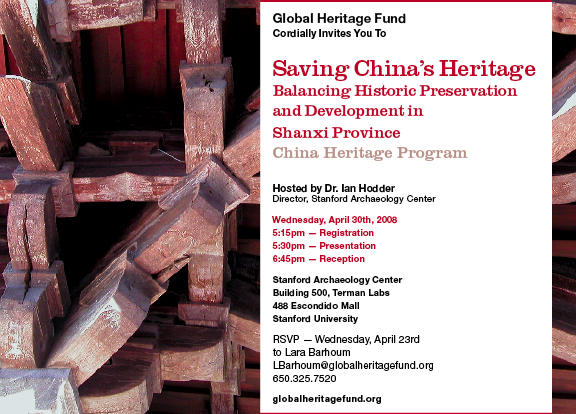
|
 |
 |
|
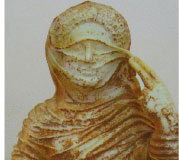 |
|
Cyrene, Libya
Cyrene, Libya. Founded as a colony of Thera in 631 BC, Cyrene soon became a major hub for Mediterranean trade. The city, sacred to Apollo of Delphi, was constantly enlarged and grew in monumentality through the Classical, Hellenistic and Roman periods and into late antiquity. Located in modern Libya on the Mediterranean coast, GHF has been sponsoring the cleaning, conservation and restoration of the amphitheatre and the Sanctuary of Apollo since 2006. These efforts will continue in 2008, to be complemented by a comprehensive 3D documentation and virtual reconstruction of the amphitheatre.
...for more info click here.
...for video on GHF Cyrene click here. |
|
|
 |
|
|
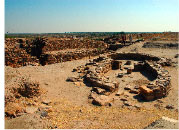 |
|
Indus Center, India
Indus Center, India. The Indus – or Harappan – Civilization was one of the earliest urban societies and arose largely along the Indus River and its tributaries in modern-day India and Pakistan. Despite a number of excavations over the past 80 or so years, however, little is known of this enigmatic culture with its still-undeciphered script. To address this situation, and to help to bring this important culture to the attention of the public and scholars, a research center and museum devoted to the topic are to be built in Baroda, India. GHF has been contributing to this initiative since 2007 by helping to secure the land for the research complex, funding the documentation and conservation of artifacts and supporting the mapping of Harappan sites and their distribution.
...for more info click here.
...for video on The GHF Indus Center click here.
|
|
|
 |
|
|
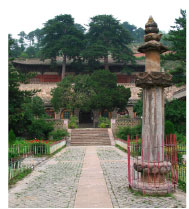 |
|
Foguang, China
Foguang, China. Built during the Tang Dynasty, Foguang Temple is a tribute to the peak of Buddhist art and architecture from the 9th century, being the oldest major wooden temple in China and representing the last remaining and earliest monument of Tang Dynasty classical Chinese architecture. However, the temple has not been repaired or conserved since the 17th century, and extensive structural damage is occurring from falling rocks and rotting roofing, beams and pillars. To arrest this destruction, GHF is leading a three-pronged program to save Foguang Temple and its monastery complex through 1) Master Conservation Planning, 2) authentic temple and monastery restoration, and 4) tourism development, site maintenance and security, all efforts which continue in 2008.
...for more info click here.
...for video on GHF Foguang click here. |
|
|
 |
|
|
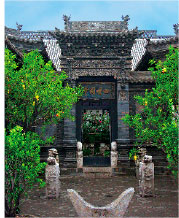 |
|
Ping Yao, China
Ping Yao, China. Located in Shanxi Province and inscribed as a UNESCO World Heritage Site in 1997, Ping Yao is an exceptionally well-preserved example of Ming- and Qing-era towns. However, urban population pressures threaten the integrity of the site and its individual buildings, so since 2006 GHF has been sponsoring the drafting of a Master Conservation Plan for the town, the restoration of a number of the buildings located within the town walls, and the establishment of responsible tourism development in conjunction with a program of site maintenance and security.
...for more info click here.
...for video on GHF Ping Yao click here. |
|
 |
 |
|
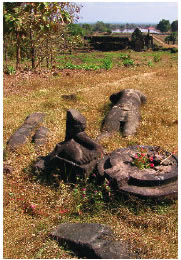 |
|
Wat Phu Monumental Complex is part of the Champasak Archaeological Park, the largest archaeological site in Laos, and was recognized as a World Heritage Site by UNESCO in 2001. The foundation of the site is dated to the mid-5th century when the Chenla kingdom (5th-7th centuries AD) started its expansion towards the north of what is now Cambodia. The monument, dedicated to the Hindu god Shiva, is one of the most original and largest extant examples of Khmer architecture in terms of its plan, its historic and religious significance and for the value of its sculptures.
Global Heritage Fund has been supporting conservation efforts at the site since 2006, with the project led by Mauro Cucarzi and Patrizia Zolese of the Lerici Foundation.
The focus to date has been on the consolidation and restoration of the 1000-year-old Nandin Hall, a sandstone building of mysterious purpose and unusual construction which marks the end of the royal road entering the site. Work has also been initiated to convert an older building from the French Colonial period into a public library.
During the 2008 field season, the library is expected to be completed and work will continue on Nandin Hall, scheduled for completion in 2010. Additionally, a survey is being conducted to evaluate the state of all monuments in the Wat Phu protected area, with the data to be integrated into a GIS conservation and archaeological database. With all of this work underway, now is an exciting time to visit what will likely become one of the most important destinations in Laos and greater Southeast Asia.
...for more info click here. |
|
|
 |
|
 |
 |
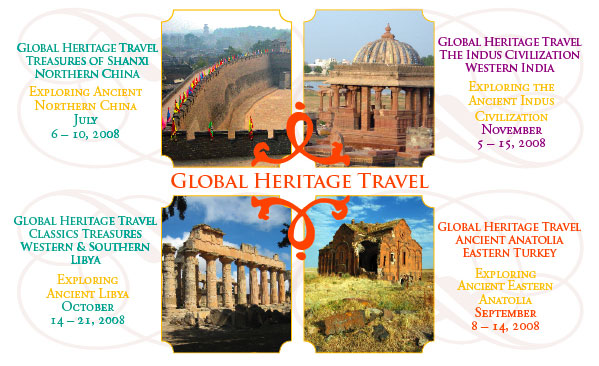
|
 |
|